IDX Privacy and Identity Review
IDX provides strong privacy protections, but there may be better and more affordable options for overall identity protection.


SafeHome.org may receive compensation from some providers listed on this page. Learn More
We may receive compensation from some providers listed on this page. Learn More
IDX provides strong privacy protections, but there may be better and more affordable options for overall identity protection.


Check out more recommendations from the SafeHome team:
Identity theft is a major problem right now, and many of us are resigned to the notion that a lot of our personal information is probably out there already. ID theft protection services can help you prevent criminals from both using what’s already out there for financial gain, and accessing more of your information.
Formerly MyIDCare, IDX has provided data breach response services for many large public and private organizations, such as NASA, CVS, and the Mayo Clinic. The company recently began marketing data protection services to everyday consumers. Based on the design and feel of the IDX platform, the company clearly has roots in combating evolving cyber threats at the corporate level.
Strong pedigree is great to have, but IDX needed to deliver in order to truly impress us. We recently put the identity theft protection service to the test, and we mostly liked what we found. Let’s break down our findings based on what we liked, and did not like.
IDX divides privacy and identity theft protections into two separate services: IDX Privacy and IDX Identity. Many other identity theft protection services focus on protecting identity and throw in a bit of privacy protection for added measure. It is possible to get both privacy and identity protection through IDX, but you have to purchase the premium-tier IDX Complete plan.
|
|
Individual plan, billed annually |
Individual plan, billed monthly |
Family plan: Two adults and five children, billed annually
|
Family plan: Two adults and five children, billed monthly |
|
IDX Identity |
$8.96 per month ($107.52 upfront) |
$9.95 per month |
$17.96 per month ($215.52 upfront) |
$19.95 per month |
|
IDX Privacy |
$11.66 per month ($139.92 upfront) |
$12.95 per month |
$23.36 per month ($280.32 upfront) |
$25.95 per month |
|
IDX Complete |
$29.61 per month ($355.32 upfront) |
$32.90 per month |
$58.94 per month ($707.28 upfront) |
$64.99 per month |
While there are some features that are exclusive to either the identity or the privacy plan, all three plans have some features in common:
It’s good to know you have these features regardless of which plan you choose. Below, we’ll get into the specifics of each separate plan.
FYI: For a deeper dive on pricing, check out our IDX (formerly MyIDCare) pricing and services guide.
If you’re interested in identity protection from IDX, there are two approaches you could take: the IDX Identity package or IDX Complete. In addition to getting privacy features with IDX Complete, the premium tier package also comes with a few exclusive identity protection features, including a TransUnion credit lock, credit score feature, and instant alerts when there’s a “hard” credit check, which is done before issuing a loan or line of credit. IDX Complete also offers credit monitoring and annual reports for all three major credit bureaus, while IDX Identity only includes one bureau.
Here’s a breakdown of the difference between the two plans when it comes to identity theft protections.
| IDX Identity | IDX Complete | |
| Dark web monitoring | Yes | Yes |
| Credit monitoring and annual report | Single bureau | Three bureaus |
| Credit score | No | Yes |
| Credit inquiry alerts | No | Yes |
| Court record monitoring | Yes | Yes |
| Payday loan monitoring | Yes | Yes |
| Change of address monitoring | Yes | Yes |
| Social Security Number tracking | Yes | Yes |
| US-based identity recovery service and advice | Yes | Yes |
| Lost wallet coverage | Yes | Yes |
| Identity theft insurance | $1 million | $1 million |
| Money back guarantee | Yes | Yes |
| Actionable alerts | Yes | Yes |
| Individual price per month | $8.96, when billed annually ($9.95 month-to-month) | $29.61, when billed annually ($32.90 month-to-month) |
| Family price per month | $17.96, when billed annually ($19.95 month-to-month) | $58.49, when billed annually ($64.99 month-to-month) |
It’s important to note that the IDX Complete includes an entire suite of privacy protection features. But if you’re not interested in privacy protections, is it worth the price jump to go with the Complete plan compared to the Identity plan? We definitely recommend three-bureau credit monitoring over monitoring at a single bureau. Being able to quickly check your credit score and getting alerts are also valuable features. However, it’s hard to justify the extra 20-plus dollars a month for the Complete plan if you’re not interested in privacy protections. In that case, you may want to look at identity-specific plans from Identity Guard or Aura.
Did You Know: Different credit bureaus monitor different data points, and different models are used to calculate the score. That’s why there can be significant fluctuations between bureaus.1
As we noted above, the Privacy plan does include some features like recovery support, actionable alerts and theft insurance. These are definitely reactive measures, but they can serve as a safety net if your identity gets stolen. However, if you’re looking for proactive identity protection, you should go with the Identity or Complete Plan.
So, what do you get when you purchase an Identity plan subscription? We recently signed up and put the service through its paces.
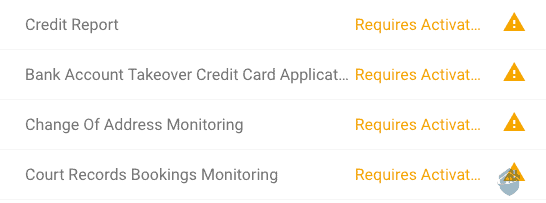
IDX Features
First on the list, we had to activate the credit monitoring services by entering our personal information. Once that was done, we were able to access our credit score, our credit reports, and our instant inquiry monitoring. This last item is something we want to highlight, as it’s unique to IDX.
This service provides a real-time notification when a lender requests access to our TransUnion credit report. This is a really helpful preventative step to circumvent identity thieves before they establish any loans or lines of credit in our name. Since the alert is in real-time, we don’t have to wait to take action — we really appreciated that, but would have liked to see the service extended across all three credit monitoring bureaus.
We were also able to lock our TransUnion credit file with the click of a button. This is a fairly unique service — We saw it in our Experian IdentityWorks review. However, this is something we recommend everyone does, regardless of what identity theft monitoring service they go with.
Locking your credit file is easy to do, it’s free, and it’s the best thing the average person can do to prevent identity theft. It works by preventing access to your credit files, thereby thwarting anyone who is attempting to impersonate you. We recommend keeping your credit file locked until you’re making a purchase that would require unlocking it like buying a house or a car. To learn more about how to do this, visit the three credit bureaus’ websites — Equifax, Experian, and TransUnion.
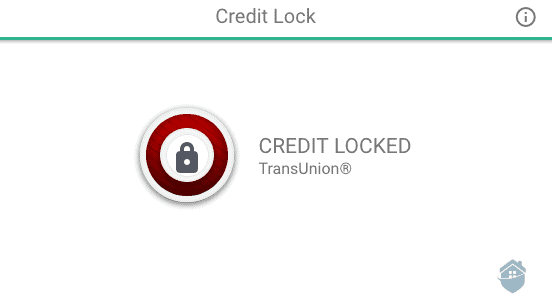
IDX Credit Lock
Next, we wanted to take a look at our credit report. Here, we were a little disappointed. Yes, the credit report was complete and detailed, but it was only that. Other services offer the same information, but when we reviewed Identity Guard, we found a lot more resources to help us unpack the information given in the report. We can’t show you our report since it’s all personal and identifiable information, but using IDX, it feels monolithic and mostly inaccessible.
Another disappointment was that the Social Security Number Trace didn’t feel robust. This is a powerful tool in detecting identity theft, and it didn’t feel as prioritized as it should have been in IDX.
Finally, there are few other items worth mentioning here, but we can’t really give a confirmed, valid review of their functionality. As part of the Identity Premier plan we had access to change of address monitoring, court records monitoring, and non-credit loan monitoring, but since there’s no way to ensure the functionality of these services, we just have to assume they are working as intended. We have no reason to believe they weren’t working, as everything else with the service seems to work great.
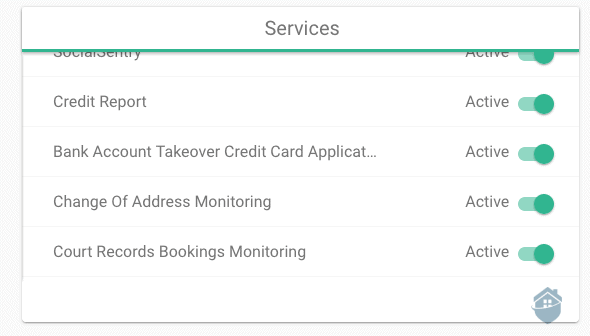
IDX Services
That about wraps up the services side of things, but one final note — IDX has a great app. Like, really great. Like, maybe one of the best we’ve seen. We’ll get to that a bit later though.
The IDX Privacy plan is all about keeping you safe while browsing the internet. Most people don’t protect themselves nearly enough when participating in common online activities like shopping, browsing social media, or online banking. And this is where IDX Privacy really shines.
Let’s take a look at what the “Privacy” plan offers compared to the all-inclusive Complete plan:
| IDX Privacy | IDX Complete | |
| ForgetMe data removal | Yes | Yes |
| Password manager | Yes | Yes |
| VPN | Yes | Yes |
| Tracking blocker | Yes | Yes |
| Password detection | Yes | Yes |
| Dark web monitoring | Yes | Yes |
| Social media privacy and fraud protection | Yes | Yes |
| US-based identity recovery service and advice | Yes | Yes |
| Lost wallet coverage | Yes | Yes |
| Identity theft insurance | $1 million | $1 million |
| Money back guarantee | Yes | Yes |
| Privacy score | Yes | Yes |
| Actionable alerts | Yes | Yes |
| Individual price per month | $11.66, when billed annually ($12.95 month-to-month) | $29.61, when billed annually ($32.90 month-to-month) |
| Family price per month | $23.36, when billed annually ($25.95 month-to-month) | $58.49, when billed annually ($64.99 month-to-month) |
Clearly, the privacy features are identical for each plan, so there’s no need to go with the Complete plan unless you want identity theft protection. But for $11.66 per month when billed annually, the privacy protection service from IDX is reasonable for what you’re getting. We wanted to see if the protections were all they were cracked up to be because we’ve only seen these types of protections once before, with NortonLifeLock’s VPN and data broker monitoring, and we were hoping IDX services were just as good or better.
Did You Know? A VPN routes you to a server operated by the service provider. Because your traffic appears to come from the VPN’s server, your actual IP address is hidden.2
To sign up with IDX, we created our account by entering our email address and creating a password. We then provided our payment information to set up the free trial. We should point out that family ID theft protection plans are available with the service, but that understandably increases the price to $25.95 per month or $139.92 annually. We selected our individual monthly plan and moved on to the tutorial.
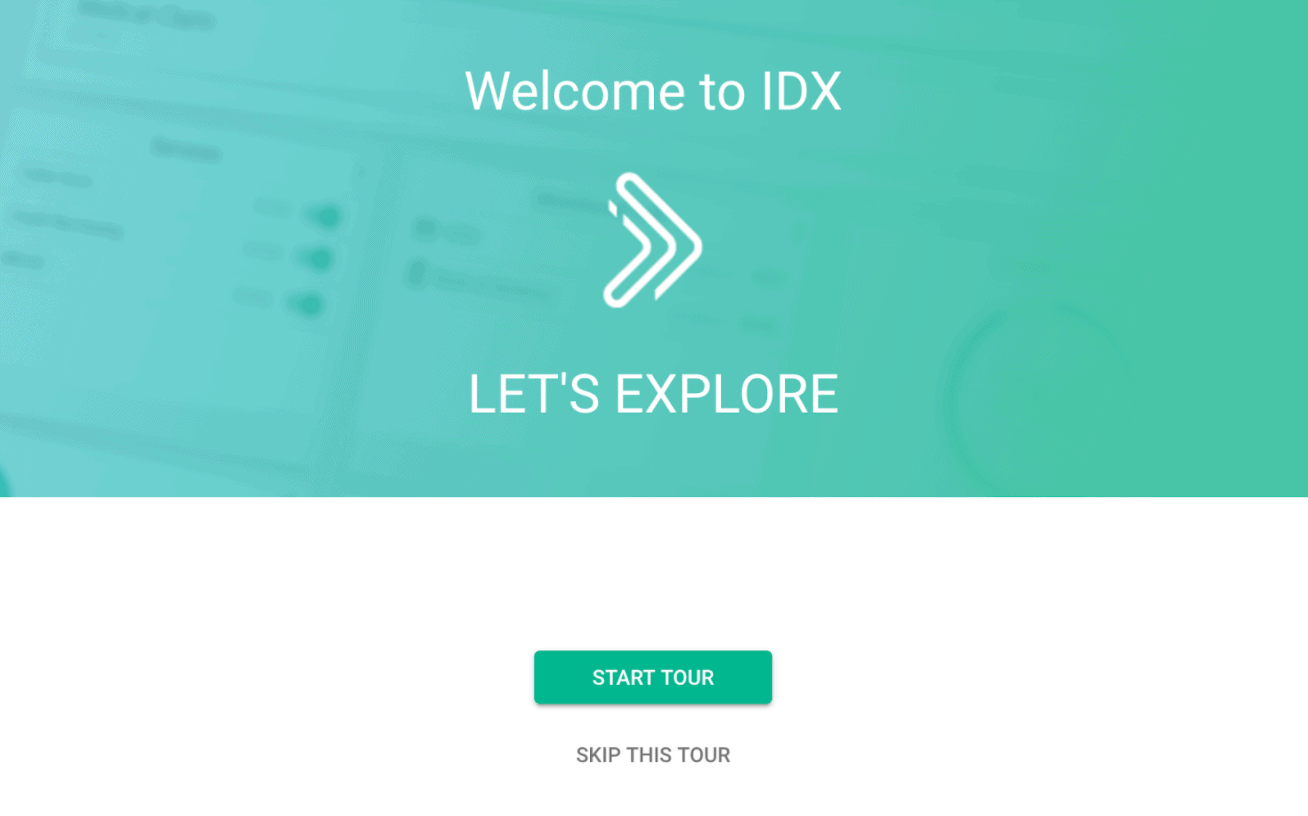
Welcome to IDX
Now, if you’ve read our roundup of the best identity theft protection services, you know we love a good tutorial on how to use a service. The features and tech can get a little convoluted, particularly if you’re new to them. IDX’s walkthrough, though, gave us a clear understanding of how our dashboard functioned, where to find what, and helped orient us before throwing us into the proverbial deep end.
Once we worked through the tutorial, we landed on our dashboard. The first thing we were prompted to do was to add the information we wanted the CyberScan service to evaluate. We figured that was as good a place to start as any; but first, let’s talk a little bit about this protection. We think you’ll like what’s in store here.
CyberScan is one of IDX’s flagship technologies. It’s a surveillance engine that proactively searches the surface and dark web — including websites, blogs, bulletin boards, Internal Relay Chat (“IRC”) channels, and more. It actively looks for compromised personal information and triggers an alert if your data is detected.
Note that most of this activity takes place on the dark web, although some people might refer to this area as the deep web. While these terms are often used interchangeably, the reality is they refer to different areas of what is collectively known as the internet.
The “deep web” is made up of web pages that aren’t indexed by search engines. Nothing untoward there, really. The “dark web,” on the other hand, uses the public internet but requires a specific browser to access. This underbelly of the web is where stolen data is sold and traded.3
FYI: It’s estimated that 96 percent of the internet is made up of deep or dark web pages. With this in mind, it’s important to have the right safeguards in place to protect your identity.
After we opted to add data we’d like protected, we were taken over to the data center where we were able to input an impressive amount of personal information divided into different categories.
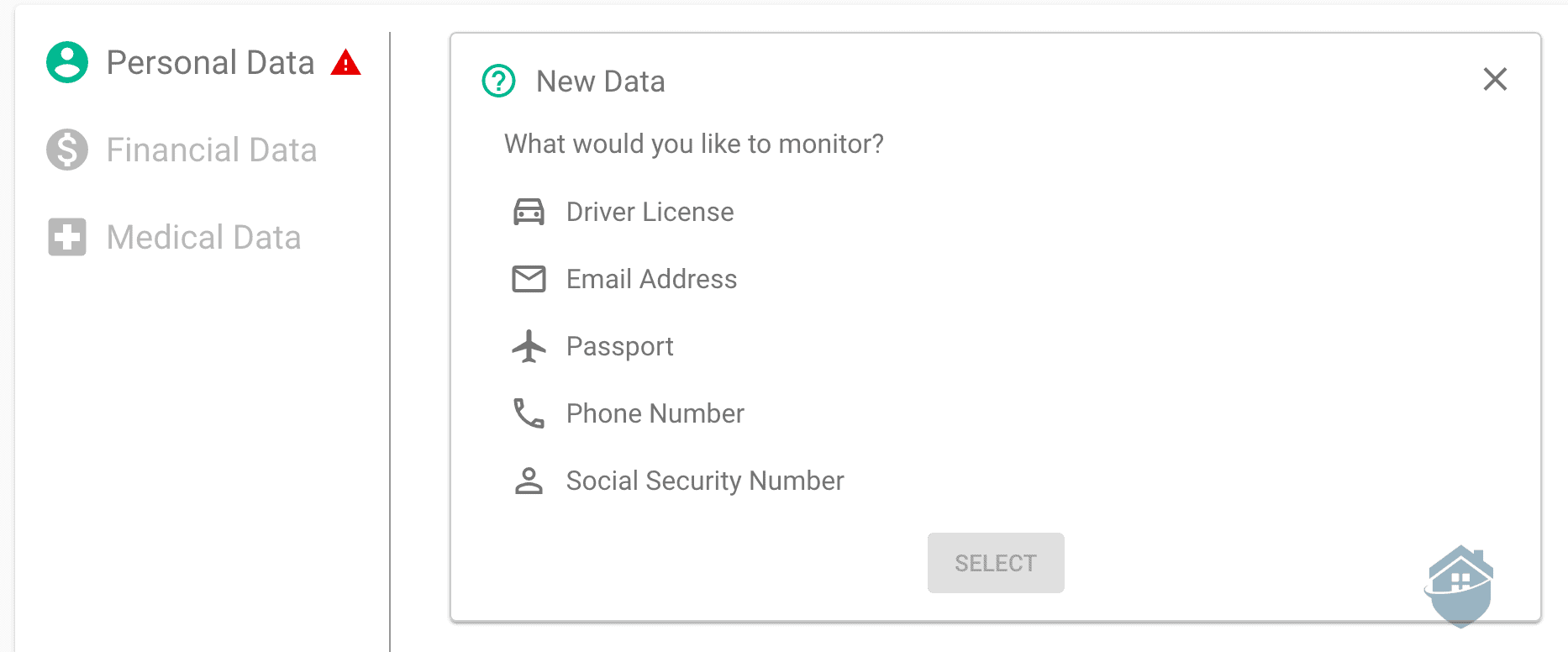
IDX Personal Data
While it’s a painstaking process, it’s well worth it to take full advantage of IDX’s full suite of dark-web protection. We recommend entering everything you have to make your protections as complete as possible.
We wanted to pause here to make note of something, though. This is a little non-quantifiable, but we really appreciated IDX’s design choices, user interface, and customer experience here. Everything felt sleek and modern, and the process felt intentional. “This” logically followed “that,” which made entering our personal information a little less daunting. It’s small things like this that really add up to make a service shine.
Once we were done, the only item that kicked back an alert was our email address. This isn’t super surprising — this has happened on every single privacy service we’ve tested. With so many high-profile breaches making headlines every month, it’s almost inevitable that your email address is showing up somewhere it’s not necessarily supposed to be.4 What was surprising was the level of detail in the alerts.
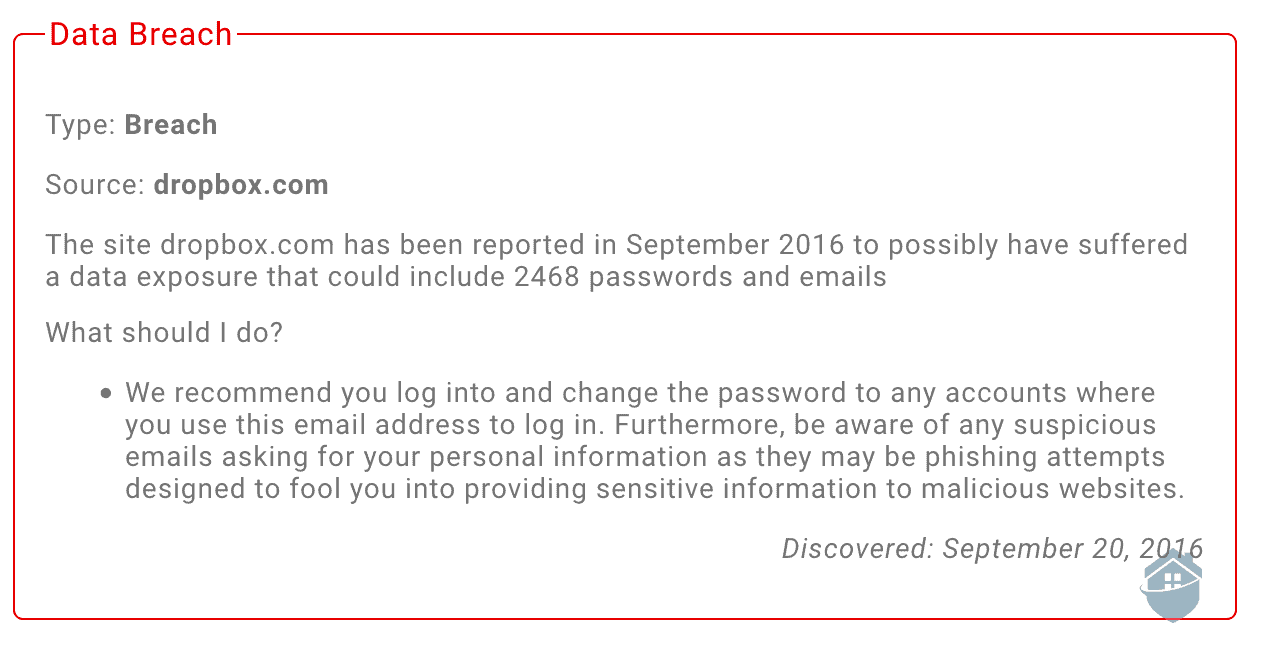
IDX Data Breach
Not only did IDX give us the source of the breach, but it also gave us the date of when it occurred, and the number of affected accounts. This is a level of detail that few services we’ve seen get into. It also provided us with actionable information on the next steps we should take, but since these alerts were all from years ago and we’ve since changed our log-in credentials, there wasn’t much to be concerned with here.
FYI: If you spend a decent amount of time on the web and have various accounts with different services, you’re likely to find you’ll have some results here. Don’t panic. As long as they’re not recent and you’ve changed your passwords, there’s nothing to worry about.
Once that was done, we landed on our dashboard. The first thing that drew our attention was the big “57” in the right-hand corner. This was our IDX score, or our ranking out of 100 on how secure our identity was at the moment.
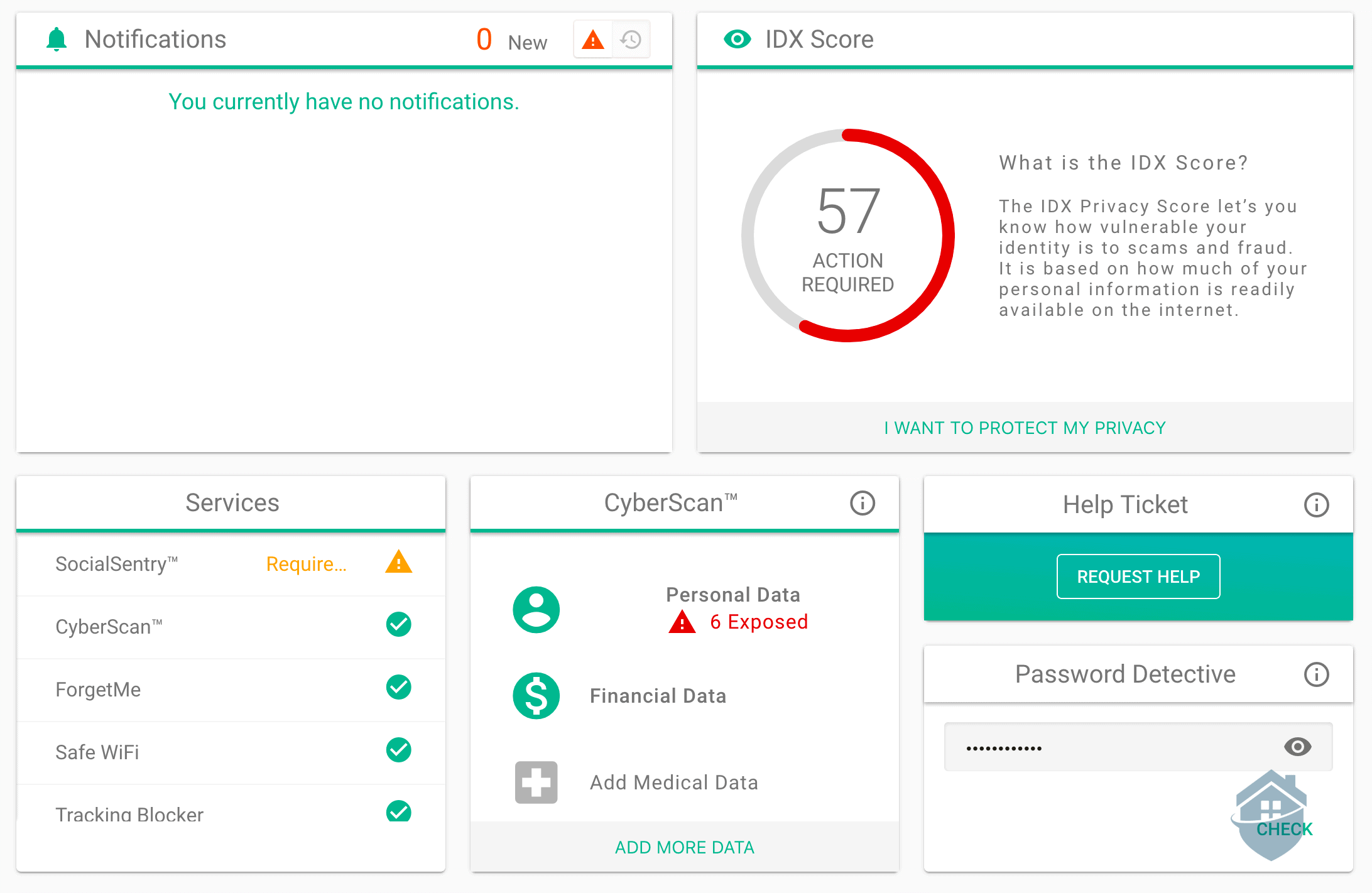
IDX Dashboard
We’ve seen this gamified approach when we recently reviewed IdentityForce, and honestly, we love it. It’s a really helpful tool to associate a number with your level of protection and to see how the actions you’re taking improve or detract from your security posture. Get a 57 on a test in middle school, and it’s no video games for a week. Get a 97, and your parents are taking you out for chicken fingers. We’re more interested in the latter, so we clicked “I Want to Protect My Privacy.”
The first step was to set up our Forget Me Personal Data Removal. This feature prevents data brokers from mining our personal information and selling it to third-party groups and advertisers.
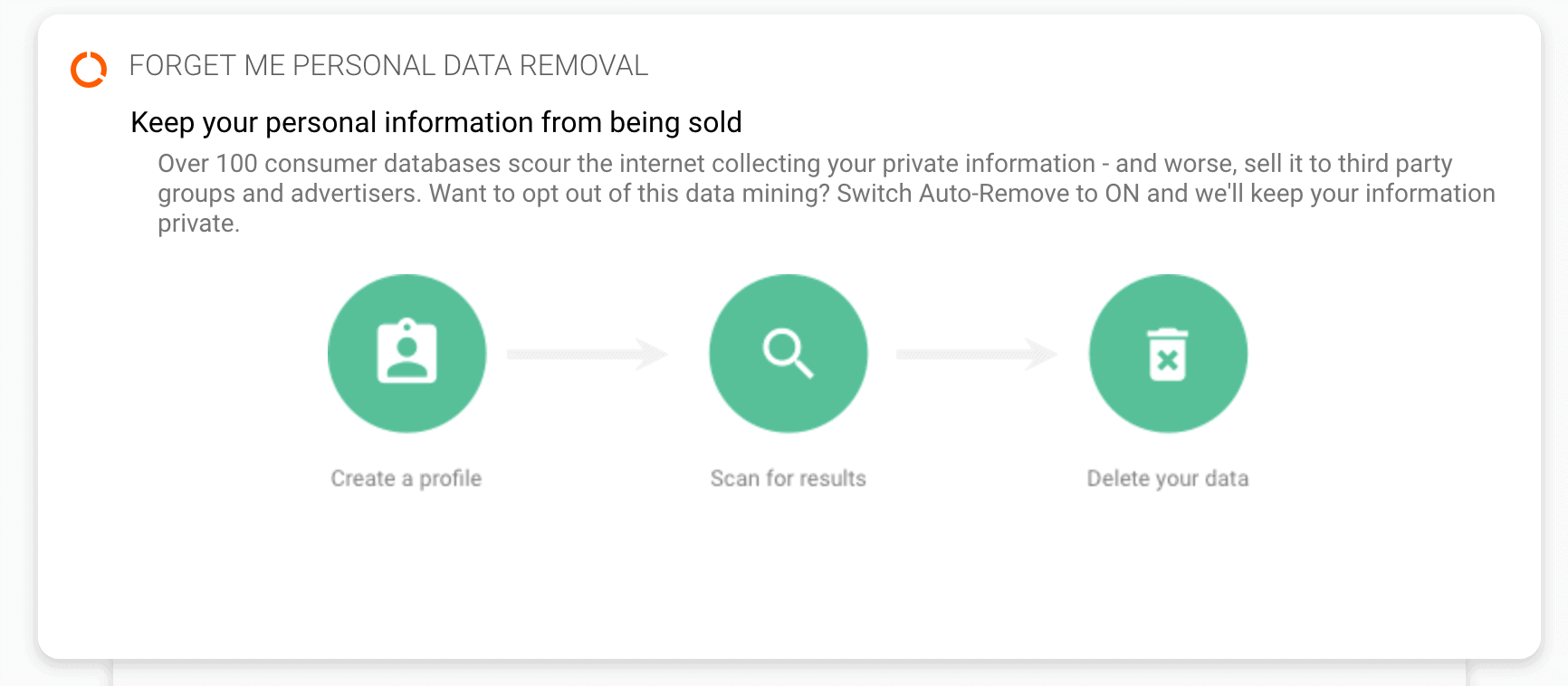
IDX Data Removal
Setting up the data removal was easy enough; we just had to enter our name, our address, and our date of birth; the rest of the process was automated. For context — our scan turned up 74 files associated with us. Seventy. Four. How creepy is that? Honestly, we love this functionality and we wish more services offered it. If you’re a privacy-minded person, we’re sure you’ll want to take advantage of it.
Did You Know: There are hundreds of data brokers out there that aggregate your personal information gleaned from your browsing history to create an unsettlingly complete profile about your personal life, the brands you use, the health problems you have, and even your personal preferences, all without your expressed consent.
Next up was the Tracking Blocker. Keep in mind that the majority of websites today use some sort of tracking technology to collect information about their users’ behavior. Tracking Blocker is a browser extension that detects and stops these trackers from activating when you browse and limits the amount of personal information that can be collected.
Unfortunately, the extension is only available for Google Chrome and Microsoft Edge. We guess it’s IDX’s prerogative, but we really would have liked to see more popular browsers supported here.
FYI: There is an IDX extension for Firefox, but it’s only for the password manager.
IDX Tracking Blocker
Here we also found access to our Private Search function. Most popular search engines (ahem, Google) track your browsing history and other information to create profiles that are then sold to third-party advertisers. It’s a little disingenuous to call this a “service” offered by IDX, though. Really it’s just a link that searches for your terms in DuckDuckGo, a search engine that made a name for itself by not tracking any search information. We gave it a whirl and weren’t displeased by the results.
Next on the list was Social Sentry. This function helps uncover the data social media networks are mining and selling to third-party companies. Or — so it says. We gave IDX access to ours, and thankfully nothing came up.
As far as the data mining went, we let it run for a few days and nothing came back. We guess this is a good thing, but it’s always a little disconcerting when a service offers something and there’s no way of telling what it’s doing or if it’s working. To be honest, we see this a lot with sex offender monitoring and court records scans, as well.
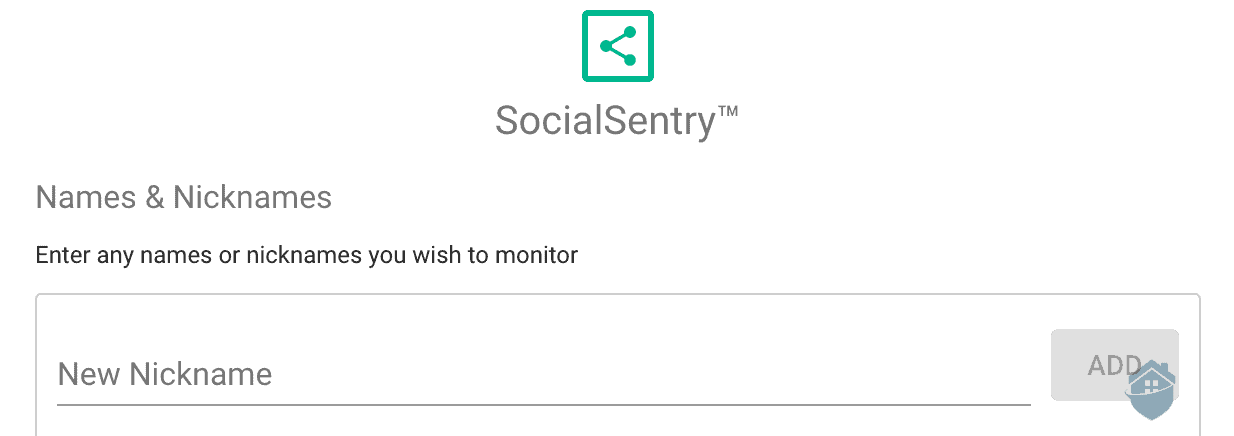
IDX Name Monitoring
Next up was the Password Detective. This is a pretty cool feature that allowed us to check any password we were using against known data breaches and password cracking systems. None of ours were found, luckily, but it’s nice to have a function where we can proactively check them from time to time.
Did You Know: The most common password belonging to breached accounts worldwide was 123456. If that’s your password, it’s well past time to update it.5
Finally, we were able to set up our VPN. Here’s a quick rundown on what that means:
Virtual Private Networks, or VPNs for short, allow you to connect to the internet using a private, encrypted connection. Think of it this way, if everyone is driving from point A to point B on surface streets, you’re driving to point B through your own, personal tunnel with gates at either end that only you can open. VPNs make browsing way more secure, which is important if you work from a laptop in a coffee shop and/or a hotel room.
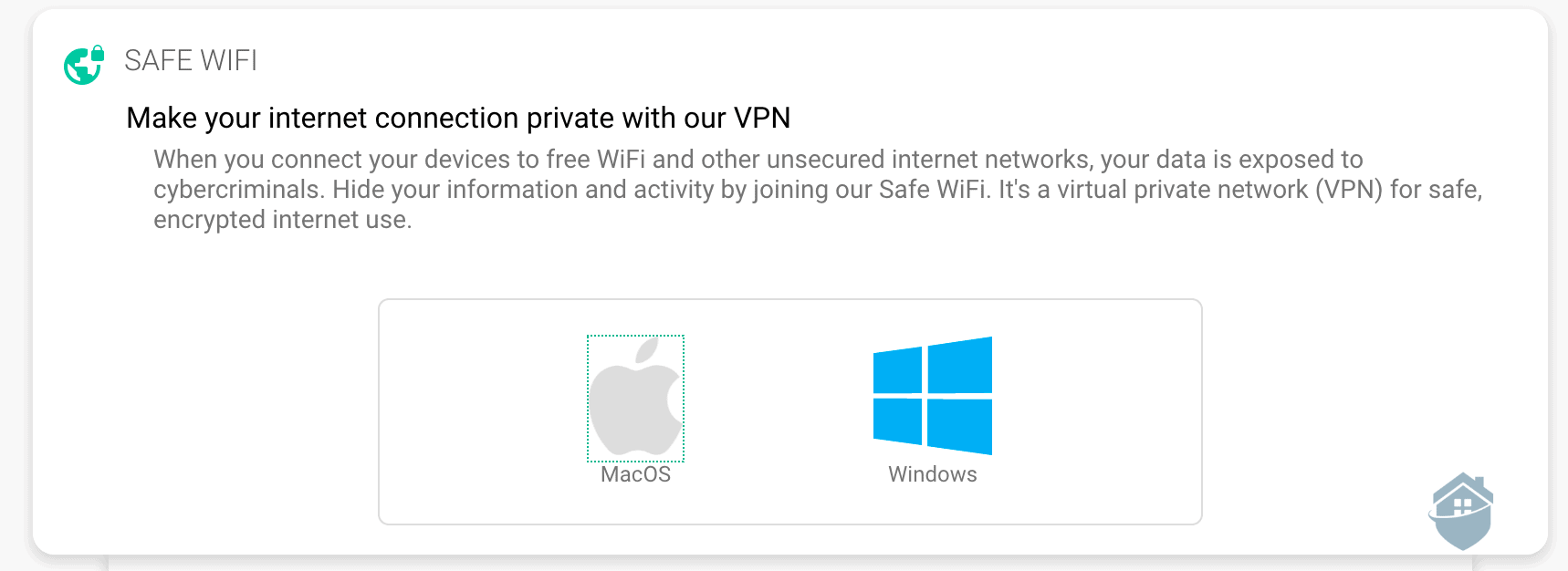
IDX Safe Wifi
Setting up the VPN was simple. We selected our operating system and downloaded the installer. Once it was set up, we were off to the races on a totally protected and encrypted network.
Alright! So that wraps up IDX’s Privacy protections. We were really pleased with the depth of service and the high level of functionality. The design was great, and we felt like nearly all the services provided were actively working to keep our identity private and protected. Next, we wanted to check out their identity plans.
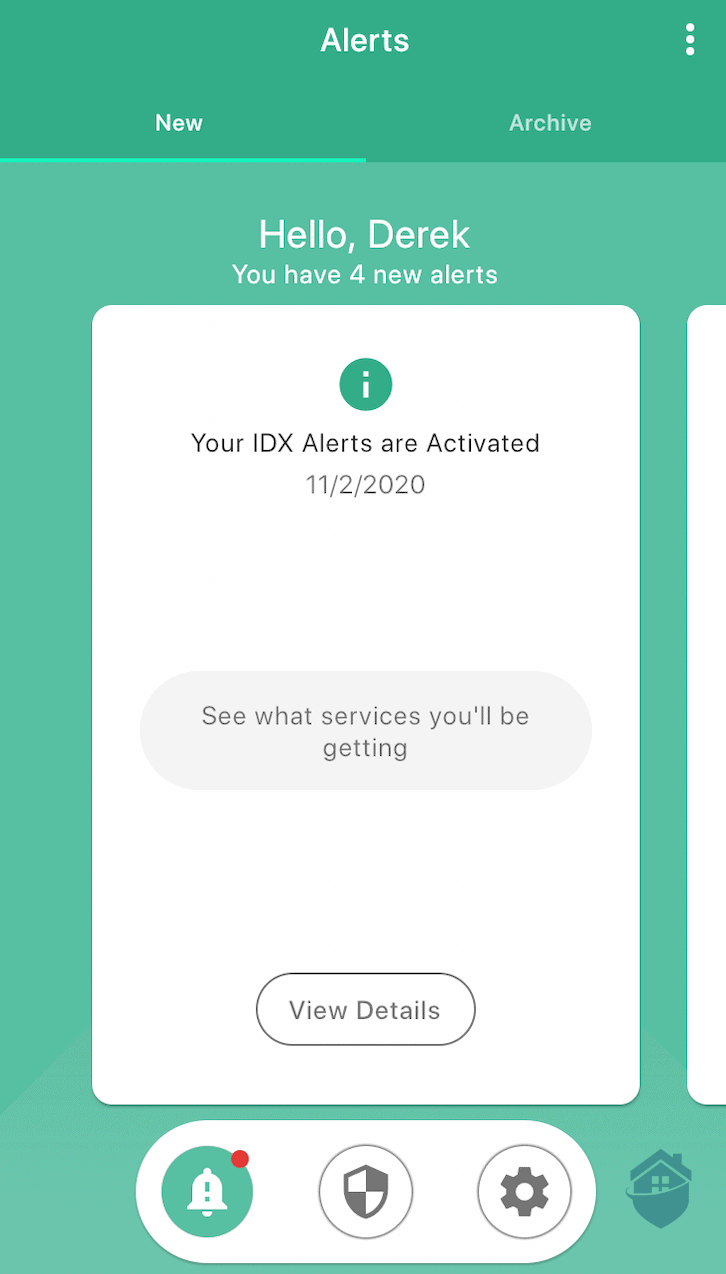
IDX App Dashboard
All too often apps for these services are afterthoughts and basically ports of the mobile versions of their desktop dashboards. This leads to clunky navigation and an overall poor user experience. IDX does not suffer from this problem, though.
The app is well-designed, the navigation makes sense, and it feels like it was conceived independently of the desktop experience. While there are obvious design elements that span both platforms for continuity’s sake, the app feels like its own thing — a rarity in this industry.
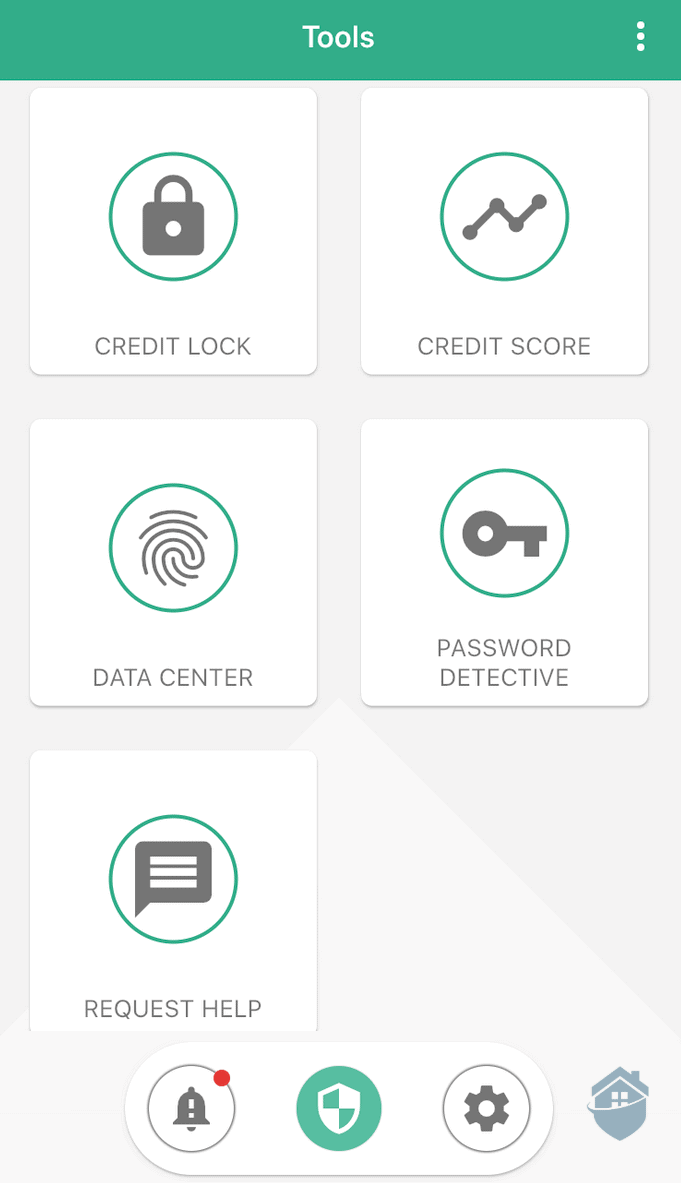
IDX App
It’s rare that you find an app that works as a substitute for the desktop experience. Most of the time, these apps are vehicles to only send push notifications should suspicious activity occur. That functionality is certainly here with IDX’s app, but by providing this type of user experience, we could feasibly see someone only using the app to set up and access IDX’s various services. Major kudos to IDX, here.
In all, IDX offers a robust and complete service with its Identity Premier plan. We’re not huge fans of how these packages are structured. By comparison, many other services do a good job of including both identity protection and privacy functions. That being said, IDX is still a really solid service and a great choice for anyone looking for all-around protection.
Yes, but only with its Complete plan.
IDX’s Individual Identity plan costs $9.95 per month, its Privacy plan costs $12.95 per month, and its Complete plan costs $32.90 per month. For families, those same plans cost $19.95 per month, $25.95 per month, and $64.95 per month respectively. If you can sign up for a year upfront, IDX offers a ten percent discount.
Yes, IDX offers up to $1 million in reimbursement insurance should your identity be stolen and a team of trained experts to help resolve your case.
Dark web search and monitoring functions are available with all plans. Available with the Privacy and Complete plans, Social Sentry uses machine learning to monitor social media for inappropriate content related to a subscriber.
Yes, it’s well-designed and highly functional.
White, A. (2020, August 31). 6 Reasons Why Your Credit Scores are Different and Which One Matters Most. CNBC. https://www.cnbc.com/select/why-are-my-credit-scores-different/
Vigderman, A. (2024, October 18). A 2024 Guide to VPNs. Security.org. https://www.security.org/vpn/
Sussman, B. (2018, August 15). Dark Web vs. Deep Web: What Is the Difference? Secure World. https://www.secureworldexpo.com/industry-news/dark-web-vs-deep-web
Swinhoe, D. (2024, September 12). The 18 Biggest Data Breaches of the 21st Century. CSO. https://www.csoonline.com/article/534628/the-biggest-data-breaches-of-the-21st-century.html
Picheta, R. (2019, April 23). How Hackable is Your Password? CNN Business. https://www.cnn.com/2019/04/22/uk/most-common-passwords-scli-gbr-intl/index.html